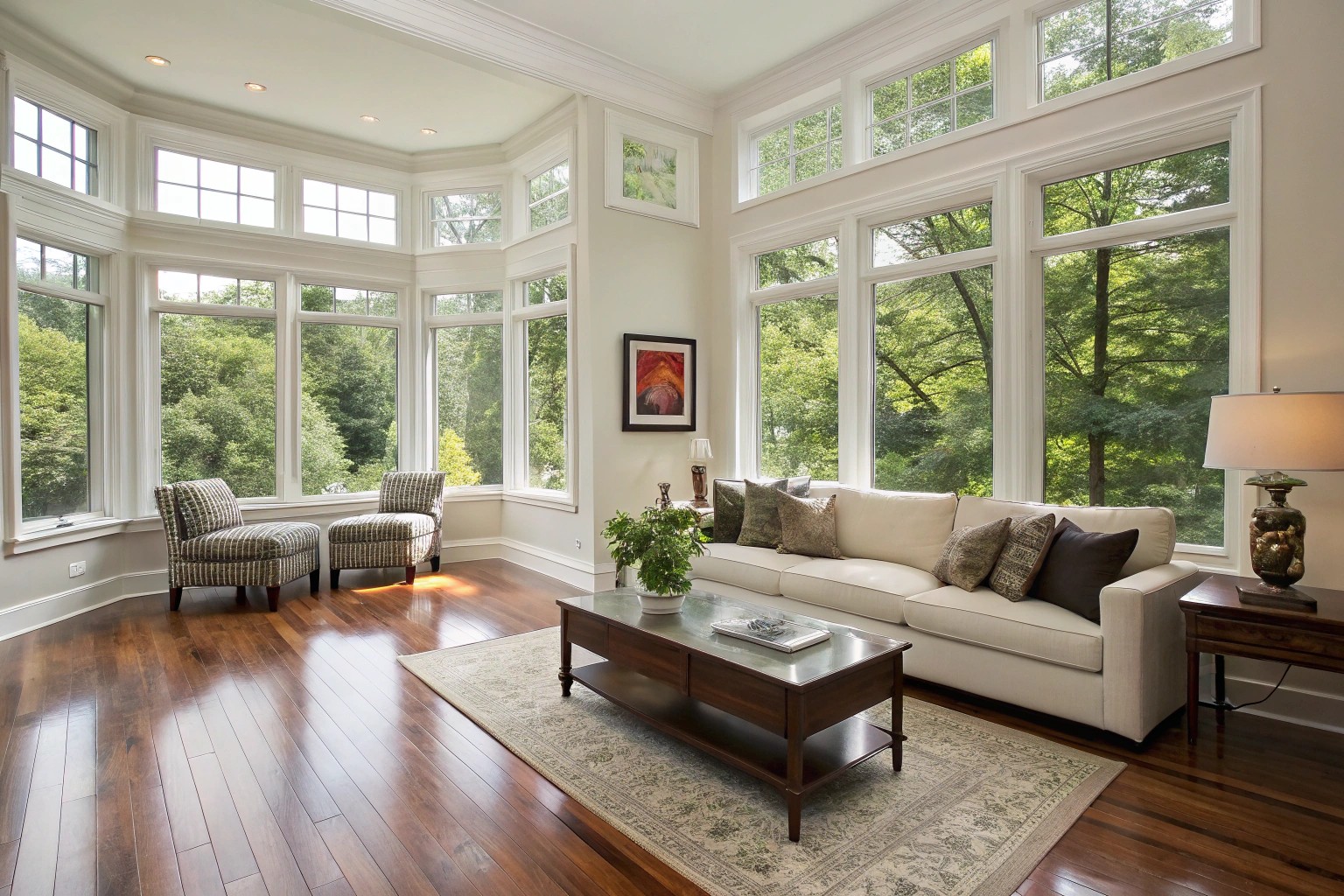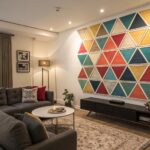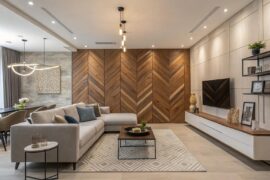Windows are the eyes of your home—connecting interiors to the outdoors, flooding rooms with natural light, and serving as architectural focal points. Yet when windows appear in challenging locations or unusual shapes, they can quickly become design dilemmas. In my fifteen years of designing window treatments, I’ve discovered that these “problem windows” often become the most interesting design opportunities.
Understanding Window Treatment Fundamentals
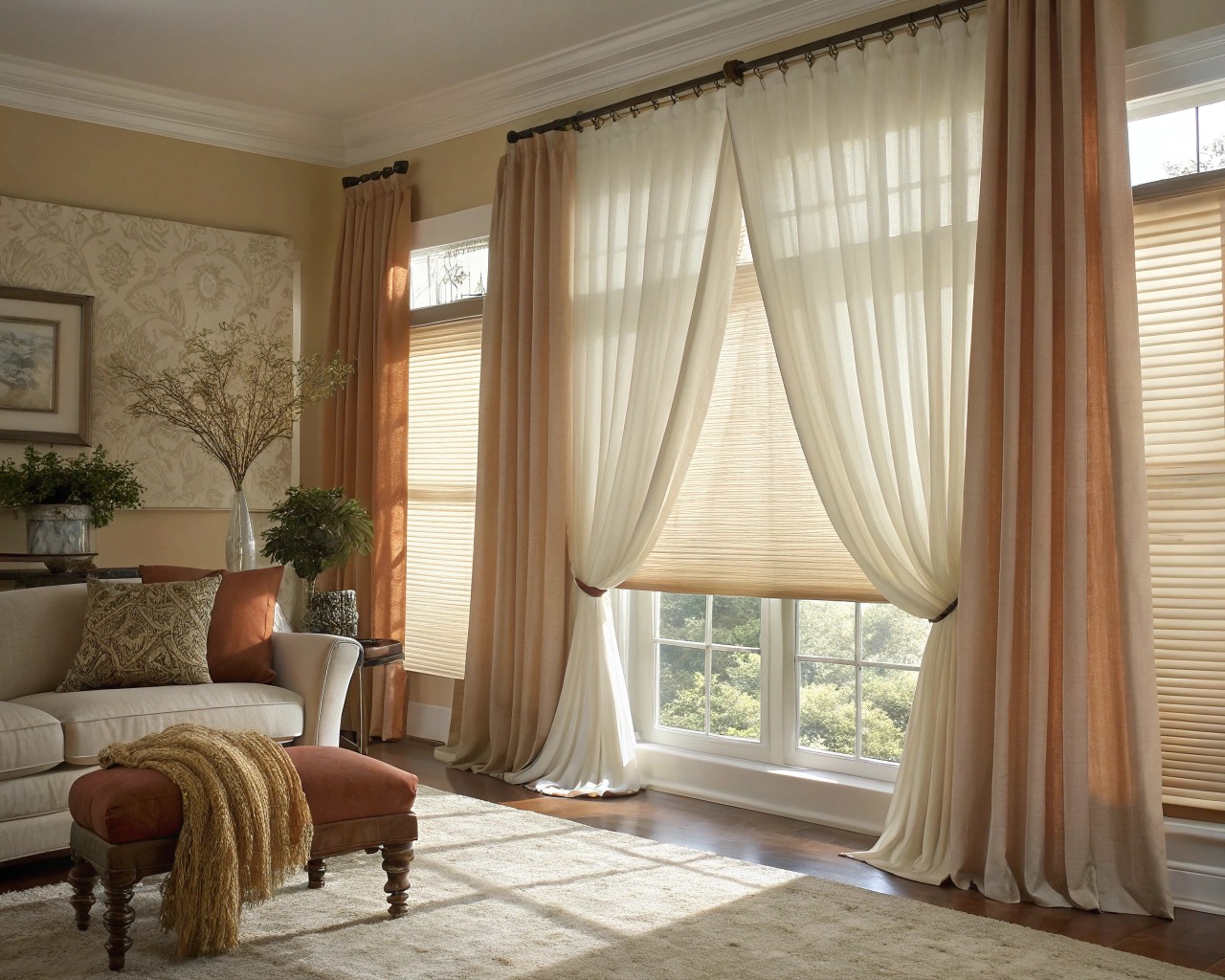
Before diving into specific scenarios, let’s establish some window treatment fundamentals that apply across all situations.
Balancing Form and Function
Window treatments serve dual purposes: they’re functional elements (controlling light, providing privacy, improving energy efficiency) and design statements. When approaching any window, consider these primary functional needs:
- Privacy requirements: How exposed is the window to outside view?
- Light control: Does the room need blackout capability or light filtering?
- Insulation needs: Is heat loss or gain a concern?
- Ventilation considerations: How often will the window need to be opened?
Once you’ve identified functional priorities, select aesthetic elements that complement your space while meeting those needs.
Layering Techniques

Layering window treatments means using more than one type of covering on the same window. This approach provides maximum flexibility for both function and aesthetics.
Table: Effective Layering Combinations for Different Design Objectives
| Design Objective | Base Layer | Middle Layer | Optional Top Layer | Best Used For |
|---|---|---|---|---|
| Maximum Light Control | Blackout Roller Shade | Drapery Panels | Decorative Cornice | Bedrooms, Media Rooms |
| Privacy with Light | Solar Shade | Sheer Curtains | – | Living Rooms, Offices |
| Insulation & Warmth | Cellular Shades | Heavy Drapes | Valance | Cold Climates, North-Facing Windows |
| Architectural Focus | Wooden Blinds | Stationary Side Panels | Shaped Cornice | Period Homes, Feature Windows |
| Modern Minimalism | Roller Shade | Ripple-Fold Drapes | – | Contemporary Spaces |
Houston designer Kara Childress notes that window treatments are ideal for enhancing or softening a room’s atmosphere, regardless of the specific intention. She explains that patterned draperies can introduce depth and create a focal point, while natural or solid-textured panels contribute subtle detail and layering to a space.
Mounting Considerations
How and where you mount window treatments dramatically impacts both function and appearance.
- Inside mounting: Treatments installed inside the window frame create a clean, tailored look
- Outside mounting: Treatments mounted outside the frame can make windows appear larger
- Height placement: Hanging curtains high above the window frame creates an illusion of height
- Width extension: Extending curtain rods beyond the window frame makes windows appear wider
Bay Windows: Embracing the Angles
Bay windows were a Victorian innovation designed to allow more light into homes, afford better views, and make rooms appear larger. Today, they remain desirable architectural features but present unique dressing challenges.
The Bay Window Challenge

Bay windows create several design dilemmas:
- Angled walls create difficulties for standard curtain tracks and rods
- Radiators are often placed under bay windows, complicating full-length curtains
- Windows may be at different heights or sizes despite appearing similar
Treatment Options
For bay windows with curtains, consider these approaches:
- Custom-bent curtain rods: These follow the angles of the bay precisely
- Multiple straight rods: Using separate rods for each section
- Bay window curtain poles with flexible corners: These allow for a continuous track
When radiators are present beneath bay windows, I typically recommend layering:
- Use full-length curtains that remain open when heating is on
- Add a secondary treatment like blinds for privacy when needed
Client Case Study: Victorian Bay Window Solution
I recently worked with a family in a Victorian brownstone who wanted to preserve their bay windows’ period charm while improving insulation. The windows were drafty, and the angled walls weren’t perfectly symmetrical after a century of settling.
We chose a layered approach:
- Individual Roman blinds in a thermal fabric for each window section
- Full-length curtains with pinch pleats on a custom bent rod
- Curtains hung high and wide to create grandeur and minimize asymmetry
It’s important to consider radiator placement when planning curtain installations. Design sources point out that radiators are often situated under windows to counteract cold drafts. Therefore, if opting for full-length curtains, they may need to remain open when the heating is active to allow proper heat circulation.
Corner Windows: Creating Cohesive Designs
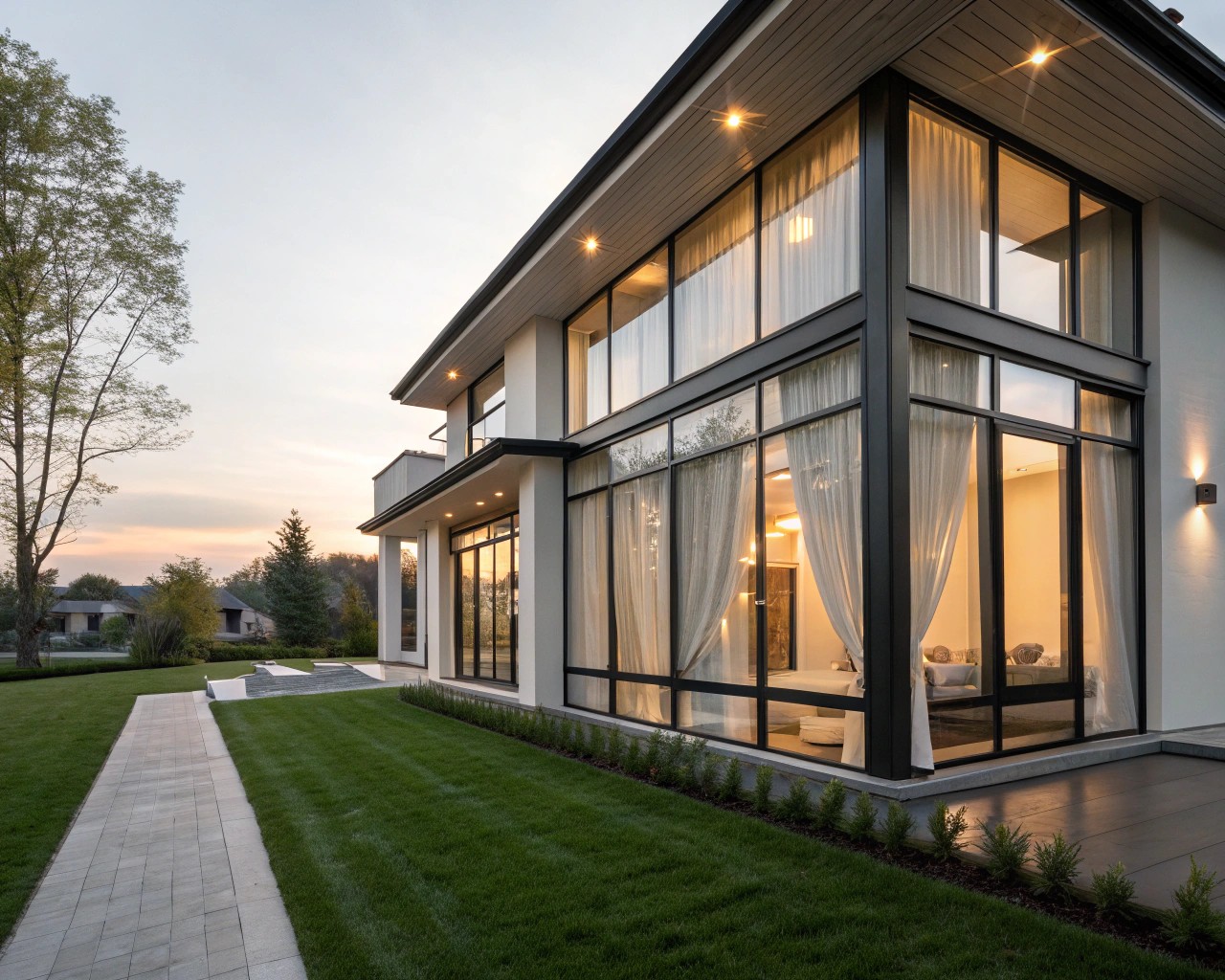
Corner windows provide panoramic views and abundant light but can be tricky to dress cohesively. They offer a distinct opportunity for creative solutions and can serve as a backdrop for a unique area within the room.
Treatment Approaches
When tackling corner windows, consider these options:
- Meeting in the corner: Curtains that completely cover both windows and meet at the corner
- Return to the wall: Treatments that return to the nearest wall
- Independent treatments: Separate treatments for each window that coordinate but don’t connect
We’ve found that corner windows offer a perfect opportunity to create a special space. For instance, designers suggest that hanging panels tied back to the corner, combined with a reading chair and small table, can establish a private nook with a dramatic flair.
Windows with Obstacles: Working Around Architectural Elements
Sometimes the challenge isn’t the window itself but its surroundings. Frequently, a window might be positioned close to a bookcase, fireplace, or wall, leaving minimal space for mounting treatments.
Asymmetrical Design Solutions
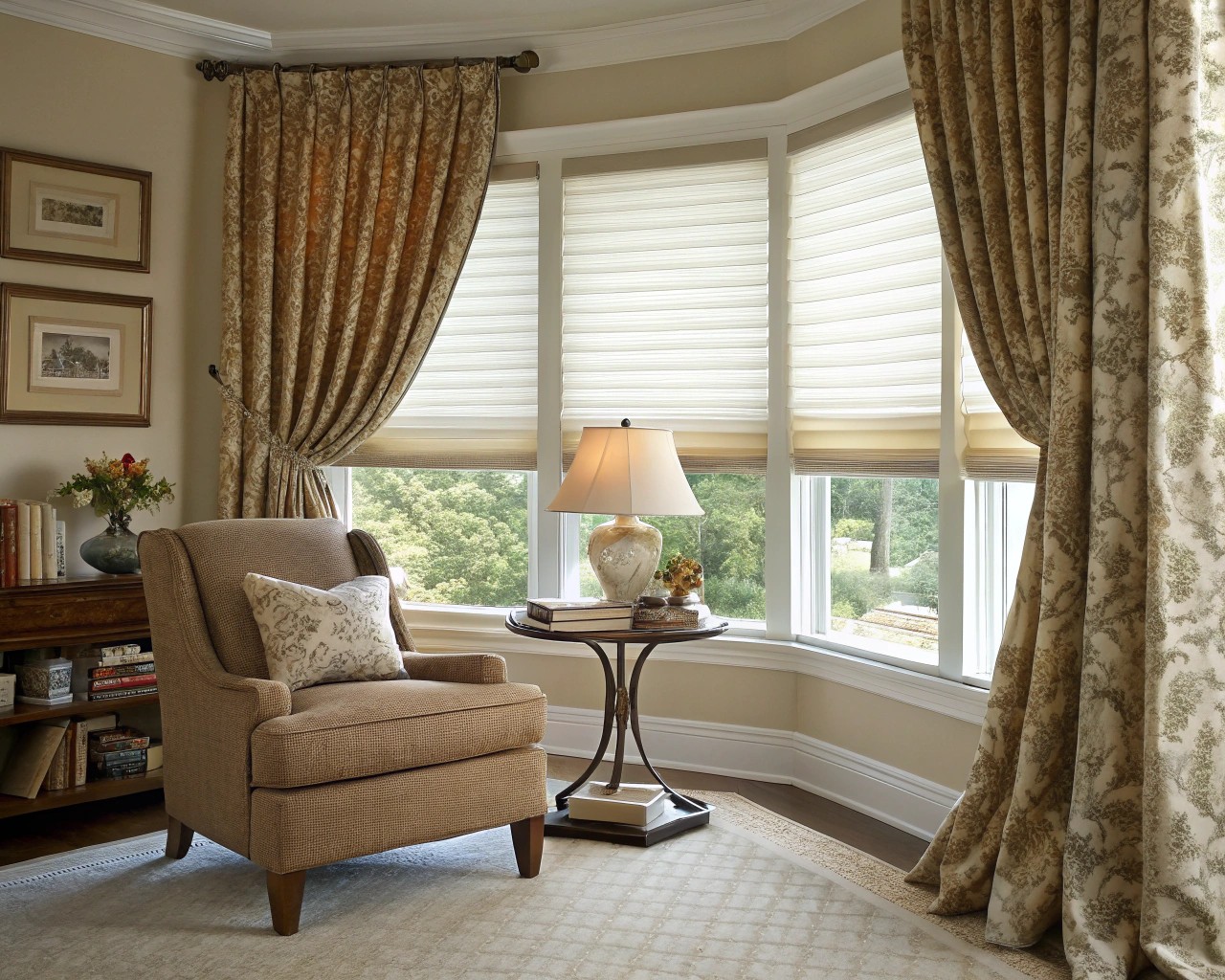
When a window is crowded on one side by an architectural element, try these approaches:
- Asymmetrical treatments: Design with intentional asymmetry rather than fighting against it
- Focus on the unobstructed side: Place visual emphasis on the side with more space
- Minimal profile treatments: Choose options that require less mounting space
One of my most challenging projects involved windows flanking a fireplace where one window had just two inches of wall space beside it. Our solution:
- Used inside-mounted Roman shades as the primary treatment
- Added a decorative valance that visually connected both windows
- Designed the valance asymmetrically but visually balanced
The result created intentional harmony without requiring physical symmetry.
Arched, Angled, and Unique-Shaped Windows
Architectural windows with non-rectangular shapes add character but present dressing challenges, particularly regarding privacy and light control for elements like quarter-rounds, arches, and angled windows.
Approaches for Non-rectangular Windows
Table: Solutions for Shaped Windows
| Window Type | Best Treatment Options | Installation Considerations | Visual Impact |
|---|---|---|---|
| Arched | Shaped shutters, Custom blinds, Arched rods with curtains | May require specialized hardware | Highlights architectural feature |
| Angled/Sloped | Tension systems, Custom shades, Stationary panels | Often requires custom fabrication | Can emphasize or minimize angle |
| Octagonal/Round | Custom shutters, Specialty blinds, Stationary drapes | Specialty mounting often needed | Creates focal point |
| Triangular | Custom cellular shades, Tension systems, Stationary panels | Precise measurements critical | Emphasizes geometric quality |
| Quarter-round | Shaped shutters, Fan blinds, Custom treatments | Often requires professional installation | Accentuates architectural detail |
For shaped windows, consider these professional solutions:
- Shaped treatments: “Many blinds, shades and shutters can be fabricated in special shapes”
- Curved treatments: Experts suggest treating arches with curved elements like swags or shaped cornices.
- Motorization: Consider “Motorized for hard-to-reach windows”
Tall and Two-Story Windows: The Vertical Challenge
Dramatic two-story windows create stunning focal points but present significant challenges for treatment, privacy, and light control.
Strategies for Extremely Tall Windows

A two-story window presents the challenge of selecting a treatment that successfully unifies, softens, and adds warmth to the expansive space.
For these soaring spaces, we typically recommend:
- Floor-to-ceiling treatments: Dramatic drapery panels that embrace the full height
- Partial treatments: Dressing only the lower portion
- Layered approaches: Combining multiple treatment types at different heights
One successful approach for a dramatic two-story window involved using floor-to-ceiling silk fabric panels combined with beautifully trimmed, embroidered faux-silk swags. This configuration effectively framed and unified the dramatic window, demonstrating how layering treatments can address both functional and aesthetic needs in such grand spaces.
In my experience, motorization becomes essential for tall windows, offering:
- Remote control operation
- Programmable settings for different times of day
- Integration with smart home systems
- Safe operation without cords
Period Properties: Embracing Imperfection
Historic homes often feature windows with charming irregularities that become challenging when adding window treatments.
Working with Uneven Elements
In one Georgian property project, designers discovered that windows appearing identical actually measured quite differently. They were not symmetrical, yet needed to be treated symmetrically to align visually with new built-in furniture.
In another room of the same historic home, a significant discrepancy in ceiling heights was found, measuring 25 cm difference between sides. This required one curtain to be 250cm long and the other only 227cm.
When I work with period properties, I follow these strategies for addressing irregularities:
- Match fabric patterns from the bottom rather than the top when ceiling heights differ
- Use adjustable mounting hardware
- Create visual balance through design even when measurements differ
- Employ optical illusions to disguise discrepancies
Expert Tips for Period Properties
Working with historic windows requires special consideration:
- “Because the walls, floor level and ceiling were all uneven we could not use standard brackets… we had to use adjustable brackets that worked with the age of the building”
- Consider insulation needs for drafty historic windows
- Respect the architectural period in your treatment style
- Be prepared for custom solutions rather than standard sizes
French Doors and Sliding Doors
French doors are a common addition to many homes today, yet they are frequently overlooked when planning window treatments.
Treatment Options for Doors
For door windows, consider:
- Simple top treatments like a valance or shade, mounted directly on the door, can work well.
- Traversing panels: For sliding doors
- Updated vertical sheer blinds: A modern take on a practical solution
When treating doors, functionality must lead design decisions:
- Ensure treatments don’t interfere with door operation
- Consider the direction of swing or slide
- Account for hardware like handles and locks
- Plan for durability in high-traffic areas
Small Windows and Awkward Placements
Small or awkwardly placed windows can appear as design afterthoughts, but strategic treatment can transform them into intentional elements.
Making Small Windows Appear Larger
Window treatments can be strategically used to manipulate proportions or disguise awkwardly placed windows. For instance, hanging Roman blinds higher can make a short window seem taller, while using wide curtains can make a narrow window appear broader.
For small windows, consider:
- Mounting curtains significantly wider than the window
- Hanging treatments near the ceiling regardless of window height
- Using vertical patterns to create an illusion of height
- Selecting light-colored treatments that blend with wall color
Dealing with Odd Window Placement
For windows in unusual locations, one strategy is to cover a wall featuring oddly positioned windows with a single, full-height curtain treatment to achieve a cohesive appearance.
I once worked with a client whose bathroom had three small windows at different heights. Instead of highlighting the awkward placement, we installed a single continuous Roman shade that covered the entire wall, creating a cohesive look that actually made the space feel larger.
Light Management and Privacy Solutions
Balancing natural light with privacy needs is particularly challenging in unique window scenarios.
Specialized Window Treatments for Light Control
For complex light management, I recommend:
- Top-down/bottom-up shades: Allow light from above while maintaining privacy below
- Dual shades: Combine sheer and blackout options in one treatment
- Adjustable blinds: Provide precise control over light angles
One architectural glass project we completed involved “a client who wanted a new office and display area for an art collection that included many centuries-old works.” The challenge was finding the perfect balance between light for human use while protecting valuable artwork from damaging effects of sunlight. We specified specialized glass with UV protection and complemented it with light-filtering window treatments that could be adjusted throughout the day as the sun moved.
Design Principles for Any Challenging Window
While each window scenario presents unique challenges, certain principles apply universally.
Universal Tips
For approaching any challenging window:
- Consider proportion first: How does the window relate to the room size?
- Identify the primary goal: Privacy, light control, aesthetics, or insulation?
- Embrace rather than fight unique features: Sometimes the “problem” can become the focal point
- Think beyond the obvious: Don’t limit yourself to conventional solutions
- Layer when in doubt: Multiple treatments provide maximum flexibility
When selecting window treatments, it’s helpful to consider the desired mood for the room, as suggested by design resources. Available options span from classic, traditional pleated drapes to contemporary blinds and shades, offering an accessible way to transform a space and inject personality.
Decision-Making Framework
When tackling any challenging window, we follow this process:
- Assess functional needs (privacy, light, temperature control)
- Identify architectural constraints and opportunities
- Determine budget parameters
- Select appropriate treatment types
- Choose materials, colors, and patterns
- Plan precise installation specifications

